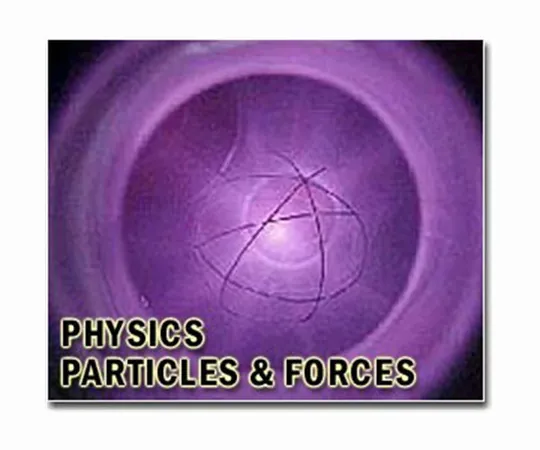
Breakthrough in Quantum Technology: Super-Fast Photon Control at Near Absolute Zero!
2025-05-26
Author: Mei
Revolutionary Advance in Quantum Photonics
In a monumental breakthrough that could transform the landscape of quantum technology, scientists at Paderborn University have achieved the fastest control of individual photons within a cryogenic circuit. This groundbreaking innovation paves the way for significant advancements in quantum communication, simulation, and information processing, enabling instantaneous manipulation of single light particles at frigid temperatures approaching absolute zero.
Game-Changing Technique Unveiled
The research team has successfully implemented a feedforward operation, allowing them to measure a photon's state and utilize that information to steer its behavior in real-time—all with an astonishing latency of under 250 picoseconds. This leap forward resolves obstacles previously faced by researchers, who struggled with delays in photon signal processing that limited practical applications.
Innovative Technology Behind the Breakthrough
Led by Dr. Frederik Thiele and colleague Niklas Lamberty of the Mesoscopic Quantum Optics group, the team has refined a sophisticated combination of superconducting detectors, custom electronics, and cryogenic optical circuits. "Our integration of detectors, adaptive electronics, and optical components allows for manipulation speeds that surpass any previous efforts," said Thiele, highlighting the potential to develop revolutionary quantum-optic circuits for a multitude of advanced applications.
Harnessing the Power of Superconducting Nanowire Detectors
The use of superconducting nanowire detectors was pivotal in this breakthrough, enabling precise measurements of single photons. Operating in an environment chilled to around -270 degrees Celsius, these components worked alongside specially designed amplifiers and optical modulators, facilitating the rapid transmission or blocking of light pulses with remarkable energy efficiency.
A New Era for Quantum Circuits
The heart of their method lies in detecting correlated photon pairs. By assessing the detection outcomes, the circuit can make real-time decisions on whether to permit a photon to advance, all while minimizing thermal interference—a critical feature for operations in confined cryogenic environments.
Transforming the Future of Quantum Science
"Our demonstration illustrates the potential of combining superconducting and semiconducting technologies to unlock a new dimension of photonic quantum control," Thiele added. This monumental advancement opens the door to the development of rapid and intricate quantum circuits, which could play a crucial role in the future of quantum information science and communication.
What’s Next?
As researchers continue to harness these technological advancements, the implications for secure communication, complex computations, and beyond are limitless. Stay tuned for more updates on this exciting journey into the quantum realm!


 Brasil (PT)
Brasil (PT)
 Canada (EN)
Canada (EN)
 Chile (ES)
Chile (ES)
 Česko (CS)
Česko (CS)
 대한민국 (KO)
대한민국 (KO)
 España (ES)
España (ES)
 France (FR)
France (FR)
 Hong Kong (EN)
Hong Kong (EN)
 Italia (IT)
Italia (IT)
 日本 (JA)
日本 (JA)
 Magyarország (HU)
Magyarország (HU)
 Norge (NO)
Norge (NO)
 Polska (PL)
Polska (PL)
 Schweiz (DE)
Schweiz (DE)
 Singapore (EN)
Singapore (EN)
 Sverige (SV)
Sverige (SV)
 Suomi (FI)
Suomi (FI)
 Türkiye (TR)
Türkiye (TR)
 الإمارات العربية المتحدة (AR)
الإمارات العربية المتحدة (AR)